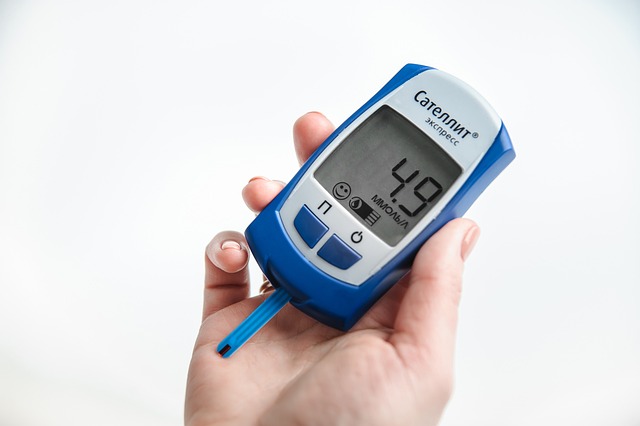In this article:
- Carbohydrates generate a lot of buzz because of their effects on weight and health.
- Carbohydrates are a primary source of energy, but consuming too many can lead to weight gain and blood sugar spikes.
- Look for nutritious sources like fruits, vegetables, whole grains, beans, and nuts. Limit sugar-sweetened foods and beverages, highly processed carbohydrates, and carbohydrates that are fried or served with fatty sauces.
- Moderate and low-carb diets can have benefits, but it’s important to have your healthcare provider’s approval and supervision, and to select nutritious foods and smart portions.
- Your Lark coach is available 24/7 to help you make healthy choices around nutrition, activity, and more.
Carbohydrates get a lot of attention, and they can spark controversy when it comes to diet and health. They’re the major source of energy for Americans, but they’re not all the same. From sugary and starchy treats to nutritious fruits and whole grains, understanding carbohydrates and how they affect weight, blood sugar, and other aspects of health can lead to major breakthroughs in your health journey.
Should you follow a low-carb diet? Will carbohydrates spike blood sugar? What if you’re craving carbs? Keep reading to learn what carbohydrates are, where you’ll find them, and how to make smart choices so carbohydrates can benefit you.
Carbohydrates Are Calorie-Providing Macronutrients
Macronutrients are sources of energy, measured in calories. The most common macronutrients in our diets are fat, protein, and carbohydrates.
Fat has 9 calories per gram. Sources include butter, cheese, cream, oil, avocado, nuts, peanuts, seeds, and fat from fatty meats.
Protein has 4 calories per gram. Sources include fish, eggs, beans, nuts, peanuts, chicken, beef, pork, turkey, soybeans, and tofu
Carbohydrates have 4 calories per gram. Sources include dairy products, fruit, grains and grain products, starchy vegetables, beans, and sugar-sweetened foods and beverages. Some food sources of carbohydrates are more nutritious than others and come with nutrients like fiber, water, protein, or healthy fats. Others carry excess saturated fats and added sugars.
Carbohydrate Types and Sources Are Varied
The main groups of carbohydrates are sugars, starches, and dietary fiber. Sugars and starches have 4 calories per gram. Dietary fiber provides less energy for your body.
Sugars are the simplest types of carbohydrates. They’re small units that your body can break down quickly. Most types of sugars can quickly enter your bloodstream in the form of a sugar called glucose, which means that having a high amount of sugar at once can quickly lead to high blood sugar or blood glucose levels.
Glucose and fructose are common sugars. White sugar, or table sugar, is a type of sugar called sucrose. It includes glucose and fructose. Corn syrup, molasses, honey, brown sugar, and syrups are also mixtures of glucose and fructose.
Starches are bigger chains of glucose. Depending on the structure of the glucose chains, your body may break them down quickly or slowly. The result is that some starchy foods are quicker to digest than others, and more likely to spike blood sugar.
Dietary fiber is also made of glucose chains, but the glucose units are attached differently than they are when they form starch. Your body only gets 0-2 calories per gram of fiber because you’re unable to digest it well. Bacteria in your gut digest fiber.
Only plant-based foods are natural sources of dietary fiber. Examples include fruit, vegetables, whole grains, legumes, seeds, and nuts. Benefits of fiber include improved weight management, digestive health, blood sugar, cholesterol, and blood pressure.
Carbohydrates and Your Weight and Blood Sugar
Carbohydrate consumption has a significant impact on weight. Not only are carbohydrates sources of calories, but many high-carbohydrate foods have additional calories from protein or fat.
Here are some examples.
- Beans have carbohydrates and protein
- Chocolate bars have carbohydrates from sugar, and fat from cocoa butter
- Biscuits and croissants have carbohydrates from flour, and fat from butter
- Pizza has carbohydrates from the crust, plus fat and protein from cheese and toppings
- Cakes, cookies, and pies have carbohydrates from flour and sugar, plus fat from butter or oil
The sources of carbohydrates you select, and their portion sizes, help determine whether carbohydrates help or interfere with your weight management goals.
Here are some tips to make carbohydrates work for you.
- Fruits and vegetables are higher in water and lower in calories
- Less processed sources are higher in fiber and more filling. Fruits, vegetables, whole grains, nuts, seeds, and beans are examples
- Highly processed carbohydrate foods and beverages with added sugars can be high in calories and not very filling
- Watch portion sizes, keeping in mind that high-calorie-dense carbs like whole grains and fruit juice are higher in calories and carbohydrates and have smaller portion sizes
Carbohydrates and Your Blood Sugar
When your body digests sugars and starches into small units of glucose, glucose is released into your bloodstream. This leads to higher blood sugar. It’s natural for blood sugar to rise after a meal, but spikes that are too high and frequent for too long can cause insulin resistance and raise blood sugar and risk for diabetes. In addition, severe drops in blood sugar after big spikes can cause hunger and cravings.
Here are some tips for keeping blood sugar in check.
- Watch portion sizes of carbohydrates
- Choose higher-fiber carbohydrate sources like fruit, vegetables, whole grains, and nuts to reduce blood sugar fluctuations
- Consume high-carbohydrate foods with a serving of protein and/or healthy fat to slow the release of glucose into your bloodstream
- Choose unsweetened foods to reduce total carbohydrate and sugar consumption
Serving Sizes of Carbohydrates
Portion sizes affect carbohydrates’ effects on weight, blood sugar, and more. A “serving size” of carbohydrates is the amount of food that contains 15 grams of carbohydrates. Here are some examples.
How Many Carbohydrates Should You Have Per Day?
What’s a low-carb diet? Should you follow one? What’s the best number of grams of carbohydrates to have per day?
The answer is different for everyone. Here’s a look at average consumption and general recommendations.
- The average American gets 46% of calories from carbohydrates, or about 250 grams per day.
- The adequate intake (AI) is the minimum number of grams that the National Academy of Sciences (NAS) has determined to be sufficient for most of the population. It’s set at 130 grams of carbohydrates per day.
- The Dietary Guidelines and acceptable macronutrient distribution range (AMDR) (the amount that has been shown to help provide an adequate diet and manage weight long-term): 45-65% of total calories
Here’s a look at more carbohydrate levels.
- Elite endurance athletes may get 70% or more of their calories from carbohydrates
- A moderately low-carb diet may have 40% or less of calories from carbohydrates. It may help with weight loss and blood sugar control, but it’s important to make healthy choices for carbohydrates, proteins, and fats
- A keto or very low-carb diet includes 5-10% of total calories from carbohydrates, or 20-50 grams of carbohydrates per day. It may help with weight loss and blood sugar control, but long-term effects are unknown.
Be sure to ask your doctor before going on any diet, especially an extreme one!
When you’re deciding on a goal amount of carbohydrates, talk to your healthcare provider for guidelines. Also, consider factors like the following.
- Being able to enjoy special occasions like restaurant meals and parties, and find foods on your plan wherever you go
- Including enjoyable foods regularly, so you feel satisfied and not deprived
- Whether you’re depending on healthy foods, whether low or high in carbohydrates
High-Carb and Low-Carb Diets Can Each Be High or Low-Nutrient
Whether you choose a high, moderate, or low-carb plan, it’s important to select nutritious options.
High-carbohydrate foods to consider are whole grains, starchy vegetables, fruit, and beans. Limit sugar-sweetened choices like sugar-sweetened sodas and coffee drinks, sugary cereals, desserts, and candy.
Low-carbohydrate foods to consider include avocados, olive oil, egg whites, and fish. Limit foods high in saturated fat or low in nutrients fatty steak or beef, bacon, and butter. And, a high-carb diet could be high in nutrients with foods like oatmeal, yams, and fruit, or low in nutrients with foods like French fries, white bread, and soda.
How Lark Can Help
Knowing which carbs to choose and how much to have can help you make more progress towards your goals. Lark can help you make more small changes to improve heart health, lose weight, and manage or prevent chronic conditions. Your Lark coach is available 24/7 for encouragement, nutrition and physical activity coaching, and habit tracking. Lark can help you make healthy choices and establish habits that fit into your lifestyle so you can lose weight and keep it off with or without GLP-1 medications.
Click here to see if you may be eligible to join Lark today!











.webp)






